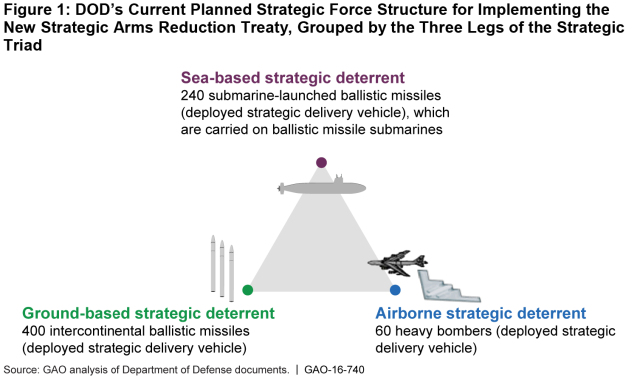Nuclear Weapons and the U.S. Strategic Triad
- Nuclear-capable heavy bombers (launched from the air),
- Intercontinental ballistic missiles or ICBMs (launched from the ground), and
- Submarine-launched ballistic missiles (launched from the sea).
 (Excerpted from GAO-16-740)
(Excerpted from GAO-16-740)
- ICBMs can be deployed promptly.
- Nuclear-capable submarines are the most survivable of the three types of vehicles.
- Nuclear-capable bomber planes can be used as a visible show of nuclear force.
- Questions on the content of this post? Contact Joseph W. Kirschbaum at kirschbaumj@gao.gov.
- Comments on GAO’s WatchBlog? Contact blog@gao.gov.

GAO's mission is to provide Congress with fact-based, nonpartisan information that can help improve federal government performance and ensure accountability for the benefit of the American people. GAO launched its WatchBlog in January, 2014, as part of its continuing effort to reach its audiences—Congress and the American people—where they are currently looking for information.
The blog format allows GAO to provide a little more context about its work than it can offer on its other social media platforms. Posts will tie GAO work to current events and the news; show how GAO’s work is affecting agencies or legislation; highlight reports, testimonies, and issue areas where GAO does work; and provide information about GAO itself, among other things.
Please send any feedback on GAO's WatchBlog to blog@gao.gov.
